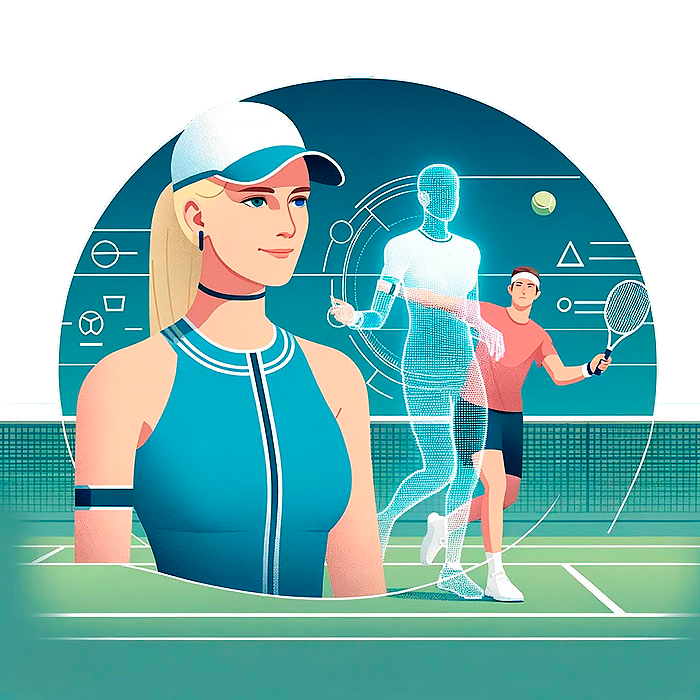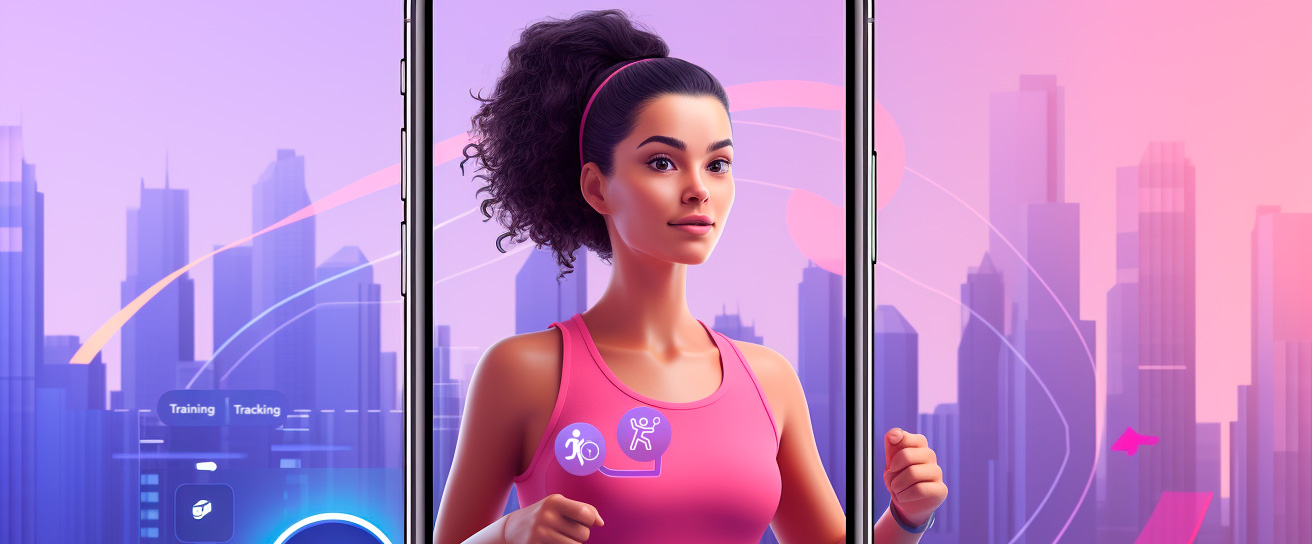Creating a AI digital twin of human sport coach using computer vision, pose estimation and LLM can revolutionize the way coaching is delivered. It offers a dynamic, interactive, and precise method for coaching and analyzing sports techniques, benefiting both coaches and athletes alike.
Pose Estimation Basics: Pose estimation involves using computer vision to detect and track human body positions and movements. Advanced systems can capture complex motions in real-time, identifying and following individual body parts like arms, legs, and the head. This technology can be applied to track and analyze the movements of a sport coach during various activities, such as demonstrating techniques or performing exercises.
Capturing the Coach’s Movements to create reference workout model: The coach would be recorded using phone camera equipped with in-app CV capabilities at 60 fps speed. It allows capture the coach’s movements in detail, including nuances of posture, alignment, and technique that are crucial in sports training.
Creating a AI twin coach: The captured data would be used to create a 3D model of the coach, accurately representing and predict its movements and poses. This model serves as the ‘digital twin’ and can be viewed from various angles, providing a comprehensive perspective on the coach’s techniques. This model can be used with ControlNet and sewing pattern recovery technologies to create hyperrealistic animated model of sport coach.
Analysis and Feedback: The AI coach can be used reinforcement learning algorithms to understand the human coach’s techniques better. For example, in a sport like golf or tennis, the model can show the precise mechanics of a swing, allowing for detailed analysis of motion, speed, and body alignment. This analysis can be used to provide feedback to athletes, helping them mirror the coach’s techniques more accurately.
Virtual Training Environments: Athletes can interact with AI coach in a simulated setting, which is especially useful when in-person coaching is not feasible. This approach can also be used for remote coaching, allowing athletes to train with their coach’s techniques from anywhere.
Personalized Training Programs: By comparing the AI coach actions and movements with those of an athlete, human coaches can create highly personalized training programs. They can identify specific areas where an athlete’s technique differs from the ideal and tailor exercises and drills to address these discrepancies.
Injury Prevention and Rehabilitation: AI coach can also be used for injury prevention and rehabilitation. By analyzing the coach’s optimal movement patterns, AI coach can identify potentially harmful deviations in an athlete’s technique that might lead to injury. Similarly, it can aid in rehabilitation by ensuring that recovery exercises are performed correctly.
Ongoing Improvement: As AI sport coach constantly learns and evolves its techniques while train an athlete, it can be periodically updated to reflect these changes, ensuring that the model always represents the best and most current practices.
Incorporating a Large Language Model (LLM) into autonomous AI sport coaching can significantly extend the its functionality in several ways:
Natural Language Interaction: Athletes can interact with the digital twin using natural language, asking questions about techniques, strategies, or training advice, and receive responses in real-time. This makes the coaching process more interactive and accessible.
Data Interpretation and Analysis: LLM can process and interpret the vast amounts of data collected by the computer vision system, providing insights that are not immediately apparent. It can analyze trends over time, compare them with optimal performance metrics, and identify areas for improvement.
Personalized real-time feedback: By integrating with virtual AI sport coaching, LLM can generate personalized feedback for athletes. It can explain the nuances of movements, suggest corrections, and even create tailored training plans based on the athlete’s performance data.
Scenario Simulation and Strategy Development: LLM can use the data to simulate different scenarios and outcomes, helping in workout strategy development. For instance, it can suggest changes in play style or training focus based on simulated matchups against different types of opponents.
Progress Tracking and Goal Setting: Athletes and coaches can set goals within the AI sport coaching, and the LLM can track progress towards these goals, providing encouragement and adjusting plans as necessary to address plateaus or setbacks to imitate positive coaching behavior.
Injury Prevention, Health Analysis and Rehabilitation Guidance: LLM can deeply analyze a different workout data to identify patterns that might lead to injury and suggest preventive measures. Similarly, it can guide athletes through rehabilitation exercises after an injury, ensuring they are performed correctly and tracking recovery progress.
Integration with Scholarly Research and Best Practices: LLM can access a vast database of sports science research, integrating current best practices into the coaching provided by the AI sport coach. This means that training can be based on the most recent and effective methodologies.
Enhanced Visualization: LLM can generate descriptive and explanatory content to accompany visualizations of the athlete’s performance, making it easier for them to understand complex biomechanical data.
Mental and Psychological Training: Beyond physical training, LLM can provide mental and psychological support, offering advice on mental preparation, focus, and dealing with pressure, which are crucial aspects of sports performance.

Language Translation and Localization: For coaches and athletes who speak different languages, LLM can translate instructions and feedback, making the digital twin accessible to a global audience.
Community and Social Learning: LLM can facilitate a community around the digital twin, where users can share experiences, tips, and success stories. It can moderate discussions, answer questions, and help users learn from each other.
To enable a Large Language Model (LLM) to analyze Computer Vision and Pose Estimation output data in real-time and provide immediate verbal feedback, the following processes could be implemented:
Data Structuring: The raw output from the pose estimation is then structured into a format that is understandable for the LLM. This could involve converting the spatial coordinates of body points and their movement over time into a sequential data format that represents the athlete’s posture and dynamics. Here’s how we can structure the data and create a dataset for LLM training:
Data Annotation and Labeling: Each key point detected by YOLO v.8 (e.g., joints like elbows, knees, wrist, etc.) can be assigned a label. Movements can be annotated with descriptors (e.g., “left arm extended”, “right knee bent”).
Sequential Data Formatting: Pose estimations are often a sequence of frames; thus, data should be structured in a time series format. Each frame’s data can be structured as a dictionary or JSON object with timestamps.
Descriptive Data Transformation: Translate the spatial coordinates into descriptive phrases. For example, instead of raw coordinates for a hand, use “hand raised above head”. Incorporate velocity or acceleration where relevant, translating them into descriptions like “fast arm movement” or “slow step”.
Enrich Data with Contextual Information: Include information about the sport or movement context (e.g., “shooting a basketball”, “swinging a tennis racket”). This context can help the LLM understand the expected motions and provide relevant feedback.
Normalization and Standardization: Normalizing CV data so that it’s independent of the athlete’s size or the absolute position in the space. Using standard terminologies for movements that are consistent across the dataset.
Feedback Pairing: For pre-training of LLM we need to pair the structured pose data with expert feedback. This can be in the form of corrective advice, technique improvements, or other coaching tips.
Dataset Creation: Compiling the annotated and structured data into a large dataset. Ensure diversity in the dataset to cover various scenarios, different sports, and a range of correct and incorrect techniques.
Inclusion of Metadata: Including a metadata such as the type of sport, skill level of the athlete, and any relevant environmental factors.
Dataset preprocessing: Preprocessing the dataset to fit the input requirements of the LLM. This may include tokenizing the text, encoding it into vectors, or performing other natural language processing tasks.
By structuring the data in this manner, the LLM can be trained to understand and generate feedback that is as close to natural human language as possible, making it highly accessible for athletes to interpret and act upon.
Incorporating LLMs into virtual sport coaching creates a comprehensive tool that can adapt and respond to the nuanced needs of athletes, making high-quality coaching more personalized and accessible. It is a fascinating application of AI technology in sports.






